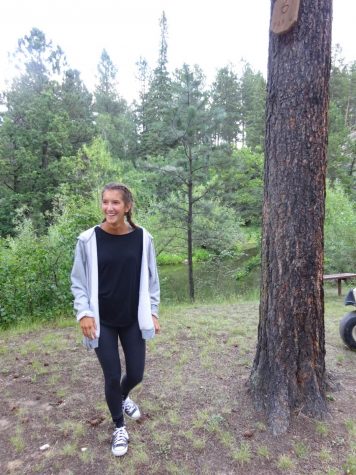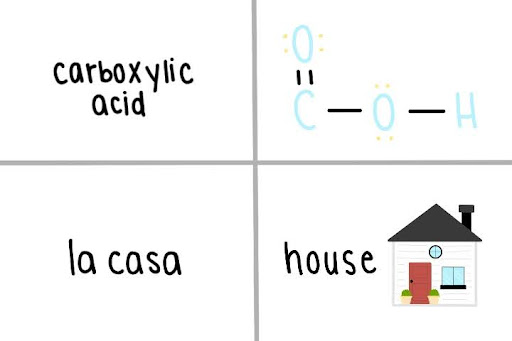E-Wing electives

Photo Provided by Google Public Use
Many LHS students take elective classes to learn new and different skills. Welding is a class option for students who want to use their hands.
May 24, 2017
Webpage Design
A class that is just as hands on as an art class, Wood Tech or Welding is a virtual course known as Web Page Design. The course triggers the left side of the brain like most electives do for only a semester. Despite it being a computer class, it allows students to be creative.
Web Page Design is mostly project-based which creates more time for students to really become familiar with all of the software basics and the more tricky parts of the software.
“Students have full creative control over their projects,” said Web Page Design teacher Janet Kolb. “They take on the role of designing a website for a client. They design all aspects of a business website, from page layout, images, fonts, colors, the only parameter is the text that they are provided for the website, the design is uniquely theirs.”
The skills learned in this class are skills for an ever expanding career path. Students experienced with different software might have a leg up than someone without that skill. Computers are not going away, and this class prepares students for that.
“This class teaches real-world skills,” said Kolb. “The software used in this class is actually used by small web development companies, and the skills are applicable to other software applications. Many students believe that they have to know how to program to create a website, and that is not true, it helps, but most softwares do the programming for you.”
Although the class has some direction when creating the project, Kolb encourages students to branch out. Each project allows for individualism in order for the student to explore and experiment with the program.
“I enjoy the uniqueness of individual projects,” said Kolb. “It is alway amazing that when you give guidelines for a project, the different levels of creativity that these inspire in students.”
Welding
Cutting metal and fusing it back together seems like an elective class for seniors to take when they are all out of options, but in reality the class is much more than an easy break from the core classes. The students taking Welding learn how to safely use the many machines and create multiple different kinds of joints while working at their own pace.
Many steps have to be taken by the welders before welding can begin each class period. Welding is a dangerous task so Welding teacher Ryan Kortemeyer takes all the necessary precautions each day to make sure the environment is a safe one to work in.
“Pretty much the welding students routine is when they come in they put on their safety glasses first,” said Kortemeyer. “We have to make sure the lights are on. The ventilation system has to be on. When we weld, it produces gasses and fumes and we can’t breathe that in. We would suffocate if we didn’t have that ventilation.”
Welding is all about practicing the process, therefore the class is very project oriented. The students taking this class get to spend the whole period practicing and perfecting their set task.
“This is a hands on class so it has creative and critical thinking where you have to think outside of the box,” said Kortemeyer. “You can read about it in the books and all that stuff but you have to come out here and actually apply it. It helps you to read through the stuff and memorize the information. Then you actually apply it, then you have to work through your struggles.”
The students have plenty to learn while welding. Welding is more than just torching two pieces of metal together. The students learn how to do several different joints including: butt joint, lap joint, tee joint, corner joint and edge joint. It takes time and practice to learn all of this though.
“It’s fun,” said Kortemeyer. “Anybody can do it. It’s really easy to learn the process and the steps. The difficult part is building up your skill. It’s like riding a bike. The first time you ride a bike you fall down and crash all the time. You struggle. But you keep going and keep practicing, then you get pretty good at it. So, it’s kind of like that. You start out and it’s really poor. Nobody can weld at all the first go around. But as you go and your skill builds up, you get pretty good at it.”
3D Design
Many students at LHS seem to have a deep passion for anything artistic whether that is theatrical, musical or physical art. Although the bowels of lower E-wing are not all that inviting, numerous students would prefer to spend their whole day creating, learning and evolving their skills.
Other than Exploring Visual Arts, most of the art classes are forgotten. A class that will teach new skills as well as create projects to utilize is 3D Design and Construction.
“3D Design and Construction is a sculpture and ceramics course,” said art teacher Travis Hinton. “Students will learn how to apply many art techniques to create sculptures ranging from paper, metal, wood, plaster and clay. The majority of the class will focus on ceramics and ceramic building techniques including handbuilt and wheel thrown pottery.”
Whether art is the student’s career path or just a hobby, every student will leave the course with new knowledge that is applicable to not just art.
“The students will gain an educated knowledge of the process of making art,” said Hinton. “The class gives the students the opportunity to use creative problem solving skills that can also be applied to other disciplines in life and careers.”
Not only are students learning more about their art niche, but they are learning from a professional artist. Hinton has been a working artist for the past 15 years. The knowledge 3D Design and Construction students learn is not textbook, but firsthand insight.
“My favorite part is working with students and helping them solve their problems with the art projects,” said Hinton. “Each student brings to the class a unique perspective and understanding of art. Helping them develop the work of art into a final product is a lot of fun.”
Wood Tech
Learning is always a benefit of going to class and getting your work done, but Wood Tech is double winning when students learn craftsmanship and also get to actually utilize the projects the students make.
This semester long class introduces students of any grade how to safely use the machines to build beautiful works of art including a box, a paper towel holder, a napkin holder and cutting board or pizza tray.
“We learn how to use all the machines as safe as possible,” said Wood Tech teacher Robert Darkow. “I usually give a project that will use one or two machines. Then once the students turn that project in, we start the next one and use some different machines. By the time they’re done they have stuff to take home and they’ve used all the machines safely.”
In between the stress of algebra, the critical thinking of science and the memorization of social studies, it is more than necessary to relax. Wood Tech I is a perfect class to still be learning a life skill but being able to use the other side of your brain.
“This course is mostly hands on,” said Darkow. “Your normal classes give you paper to do or a computer to work on. My web page is out there and the students do the worksheets online. There’s something therapeutic about being in the shop and doing some sanding and putting some stain on and bringing out the grain in the wood. It’s good therapy.”
Although the projects that come from this class look like masterpieces, the class is much simpler than it may be perceived as. There’s a lot to learn but the class walks the students through the process step by step.
“Most people think of shop a different way than they think of an art class, when in fact you can’t just stick wood together, you have to lay it out and look at the colors and decide which ways the grains run and what looks the best. But this kind of thing nobody does anymore, and it’s unfortunate, because you don’t need a lot of equipment, you just need a little time.”






